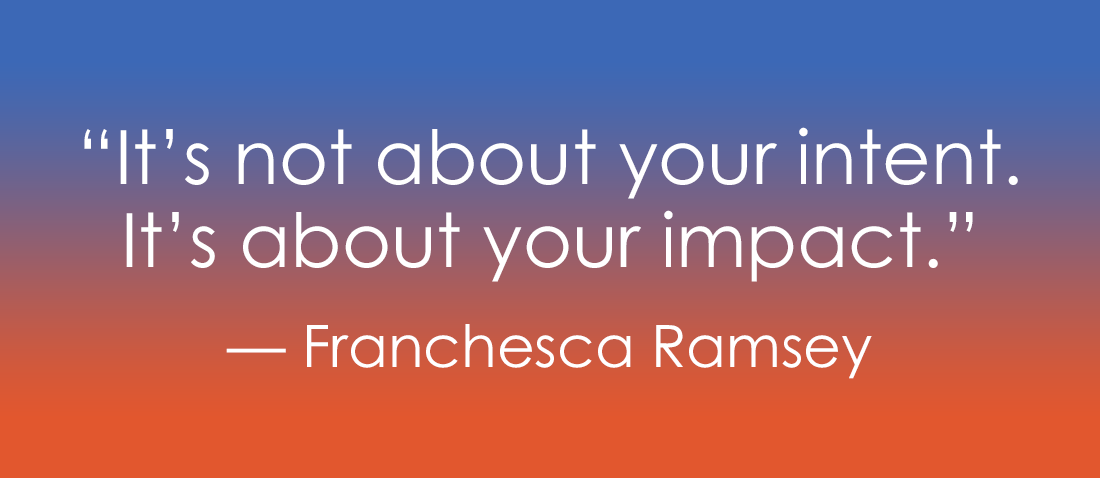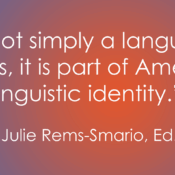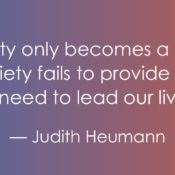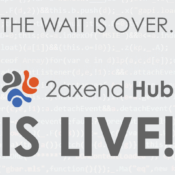
The Design Flaw: Moving B/ERGs from Good Intent to Real Impact
“It’s not about your intent. It’s about your impact.” — Franchesca Ramsey
Simply put, intent ≠ inclusion.
According to Deloitte’s Disability Inclusion @ Work 2024 report, only 41% of employees with disabilities feel their needs are adequately supported within their organizations. This majority gap isn’t caused by a lack of goodwill, it’s a design flaw.
As I mentioned in last week’s blog post From Advocacy to Action, Business/Employee Resource Groups (B/ERGs) have the power to drive inclusion beyond policy.
At their best, these valued, volunteer-led programs foster authenticity, trust, and safe spaces for employees amid the turbulent world we’re living in. These communities act as both the crucible and the advocate for driving real cultural change.
At this moment in time, B/ERG leaders are tasked with the responsibility to advocate and inspire their communities while also personally navigating a challenging, ever-evolving social, political, and economic crisis, making their support systems more critical than ever.
To close this gap, B/ERGs need leadership commitment and support to ensure they move beyond good intent and design their programs with accessibility and inclusion at the forefront. Furthermore, effective program design requires a deep appreciation and understanding of the diversity within the disability community, as needs and workplace experiences vary significantly.
Why One B/ERG Can’t Represent Everyone
Each community within the disability space experiences the workplace differently.
For Deaf, DeafBlind and hard of hearing employees, communication is everything. Access to interpreters, captioning, equitable communications guidelines, and accommodating protocols across workplace environments can determine whether their employee experience is empowering or isolating.
The list goes on… For Blind employees, inclusive software and accessible tools are critical to contribution. For neurodivergent employees, sensory and communication needs can make or break their sense of belonging.
Disabilities are vast; each is deserving of ensuring environments are intentionally inclusive and accessible in their own right. The nuances of disability are complex, and cannot be effective when collectively lumped into a single category. I’ve witnessed firsthand the disconnect between disability B/ERG leaders and their members due to a lack of representation and first-hand experience.
The implications of disability extend beyond the barriers in the workplace, affecting every aspect of daily life—including encounters with insensitive healthcare professionals at the doctor's office, communication challenges during their child’s IEP meeting, invasive questions in the grocery checkout line, and much more.
B/ERG leaders who are themselves affected often are the most invested champions for accessibility and inclusion because their efforts directly impact their ability to work.
Hence why umbrella approaches to disability inclusion don’t fit the bill. B/ERG members are seeking leaders that understand the unique challenges they face in order to find opportunities and community. Disability inclusion is only possible when deep understanding takes place.
Too often, organizations take a ‘one size fits all’ approach to disability inclusion, assuming one umbrella B/ERG can represent all disability groups. But, disability isn’t a monolith; especially for Deaf, DeafBlind, and hard of hearing employees whose communication and cultural needs are frequently overlooked when generalized under the ‘disability’ umbrella term.
To be truly effective champions of accessibility, organizations must move beyond generalization to specificity by empowering their employees through dedicated E/BRGs or chapters which directly address the systemic barriers they face every day.
Taking Action: From Awareness to Inclusion
Intentional inclusion requires intentional design.
The key lies in building dedicated spaces where team members can comfortably share experiences and drive change together. Across the board, Deaf, DeafBlind, and hard of hearing employees relate to each other’s unique lived experiences both within and outside of the workplace.
There's a foundational, higher level of empathy amongst a community of deaf and hard of hearing individuals, regardless of their hearing levels, communication needs or preferences. Their shared understanding proves vital, especially for those who have seen a change to their hearing and may not yet identify as being deaf or hard of hearing.
To this end, despite their benefit, a persistent stigma exists against hearing aids that is fundamentally different from the acceptance of devices like eyeglasses. Unlike glasses, which are often seen as a minor enhancement or even a fashion statement, the use of hearing aids can carry the weight of disability. This stigma often prevents individuals—especially those new to hearing loss—from seeking and using technology and tools to accommodate their needs. To counteract this barrier and encourage full participation, communities play an integral role in providing robust and affirming support structures. These supports, like B/ERGs, can help normalize hearing aid use, the use of accessibility-related solutions, and validate the experiences of all community members.
When all members of a community feel safe to openly share their lived experience, it allows for a broader spectrum of understanding and validation to drive meaningful change.
Leading organizations recognized on Forbes’ America’s Best Employers for Diversity 2024 understand these types of distinctions. Many have restructured their ERGs to differentiate disability subcommunities, and the results are tangible. Studies report higher engagement, stronger accessibility initiatives, and more employees willing to self-disclose.
At 2axend, we call this precision inclusion—building systems that meet people where they are, not where it’s convenient to be. After all, an interpreter in a meeting doesn’t equal access. A “disability-friendly” company that fails to caption its all-hands meetings isn’t truly accessible.
The difference lies in the details, and in the willingness to address specific needs.
B/ERGs as Influencers - Not Just Peer Groups
A well-structured B/ERG does more than host awareness events, they positively influence the employee experience.
When Deaf, DeafBlind, and hard of hearing B/ERG members are empowered, they can:
- Share positive workplace culture experiences publicly across their networks.
- Provide valuable feedback and streamline HR policies, processes, and procedures.
- Partner with HR to enhance benefits design
- … and much more!
Working with specific chapters creates a ripple effect that extends beyond the general community, creating a valued workplace culture and positive employee experience. For Deaf, DeafBlind, and hard of hearing employees, it means driving change within organizations to ensure access is part of how work gets done, not something bolted on after the fact.
The Road Ahead
Deloitte projects that by 2026, ERGs will evolve into strategic engines of culture, shaping business outcomes, not just awareness. But that shift won’t happen if organizations keep collapsing diverse identities into a single checkbox.
True inclusion demands curiosity, structure, and understanding. Everyone benefits when employees are empowered to create a work environment where all employees, regardless of their identity or accessibility needs, can thrive.



